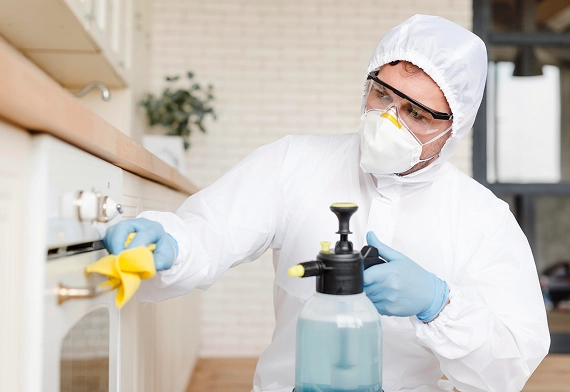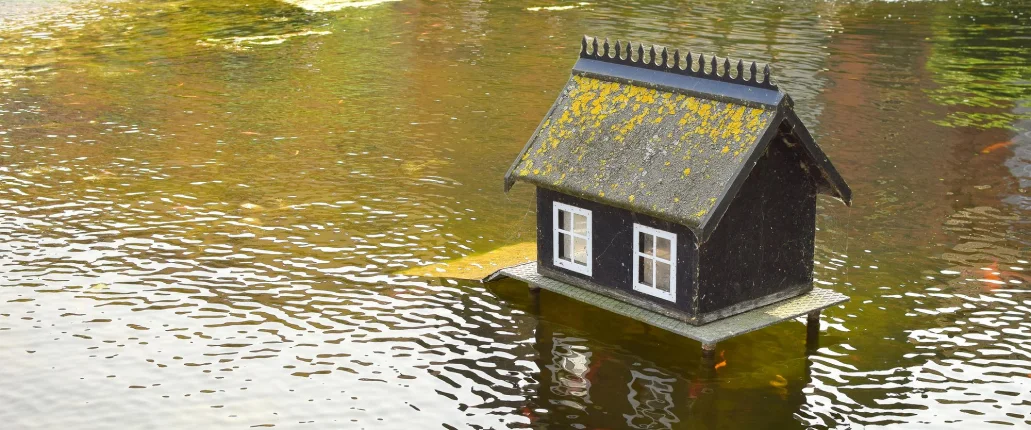What is Water Damage Remediation?
Water damage remediation is the process of stopping further damage, cleaning up the mess, and treating anything the water has touched. It’s much more than just sucking up water with a vacuum. Remediation addresses the source of the issue, removes unsafe conditions, and helps prevent future problems like mold growth or structural issues.
Here’s a general overview of what usually happens during remediation:
- Inspect and assess the damage
- Remove standing water using pumps and vacuums
- Dry out the affected areas with dehumidifiers and air movers
- Clean and sanitize surfaces and materials
- Apply treatments to prevent mold and mildew
Remediation focuses on making your space safe, dry, and livable again so you’re not left with lingering damage that gets worse over time.

What is the Difference Between Remediation and Restoration?
People often confuse remediation with restoration, but they’re not the same. Think of it like this:
- Remediation deals with the emergency. It stops the spread, dries things out, and handles health or safety risks like mold or contaminated water.
- Restoration comes after. It’s the rebuilding phase of repairing walls, replacing flooring, and making your property look and feel the way it did before the damage.
In short, remediation tackles the mess and makes it safe. Restoration handles the repairs and cosmetic fixes.
When you file an insurance claim, your public adjuster plays an important role in both phases. They don’t just document the damage; they advocate on your behalf. They make sure nothing gets missed, and they fight for a fair and reasonable settlement that reflects everything it’ll take to return your property to its original state, not just patch it up.
What’s Involved with Water Damage Remediation?
Water damage remediation isn’t just about drying out your floors and walls. It’s a step-by-step process that protects your health, your property, and your claim. When you work with a licensed public adjuster, you’re not just getting someone to handle paperwork—you’re getting an expert who knows what proper remediation looks like and how to hold your insurance company accountable for it.
Below is how the remediation process usually unfolds:
1. Emergency Response and Damage Assessment
As soon as you notice water damage, quick action matters. The first step is a thorough inspection of the affected areas. This includes identifying where the water came from, how far it’s spread, and what materials are wet, warped, or at risk of growing mold.
Public adjusters step in here to document the damage completely, including moisture readings, photos, and an estimate that reflects the scope of loss. This sets the foundation for a fair and reasonable settlement (not a rushed or lowballed offer).
2. Stopping the Source and Containing the Water
Before cleanup can begin, the water source has to be shut off. Whether it’s a broken pipe, leaky appliance, or roof leak, the issue gets addressed first. From there, the affected areas are contained to prevent the damage from spreading to other parts of your property.
3. Water Extraction
Using pumps, vacuums, and other commercial-grade equipment, the remediation crew removes all standing water from floors, carpets, and other surfaces. This part needs to happen quickly since standing water can lead to structural damage, mold growth, and contaminated conditions within just a few hours.
4. Drying and Dehumidification
Once the visible water is gone, the drying process begins. Industrial dehumidifiers and air movers run continuously to pull moisture from the air and out of building materials like drywall, subfloors, and framing. Your public adjuster will track this phase to make sure the drying is complete before moving on, since any lingering moisture can lead to bigger problems later.
5. Cleaning and Sanitizing
Water doesn’t just cause visible damage; it can carry bacteria, sewage, or toxic organic substances, depending on the source. If the damage involves contaminated water or flood water, the remediation crew cleans and sanitizes all surfaces with antimicrobial treatments. This includes wiping down walls, cleaning floors, and discarding materials that can’t be saved.

6. Mold Prevention and Remediation
If mold has already begun to grow, or if the conditions are right for it, this step includes treating those areas to prevent it from spreading. Mold remediation might involve removing drywall, insulation, or flooring that has become compromised. This step directly affects human health and property value, which is why a public adjuster makes sure it’s fully accounted for in your claim.
7. Structural Repairs and Pre-Restoration Work
After the property is clean and dry, it’s time to stabilize and prepare the space for restoration. That might include reinforcing weakened walls, removing unsalvageable materials, and preparing the site for contractors to come in and rebuild. This phase connects remediation to restoration and gives your public adjuster clear documentation to back up every repair your insurance policy should cover.
How a Public Adjuster Can Help with the Water Damage Remediation Process
When water damage strikes, dealing with the cleanup is only part of the challenge. Navigating the claim with your insurance company is often just as stressful. A licensed public adjuster steps in as your advocate.
At Excel Adjusters, here's how we help:
- Full Documentation: From the first inspection to the last day of drying, we document every detail. This includes photos of affected areas, written descriptions, moisture readings, and estimates based on the actual scope of the work—not the bare minimum your insurer might suggest.
- Evaluating the Full Extent of the Damage: Whether it’s leaking pipes, flood water, or a broken appliance, water doesn’t stop when it hits the floor. It seeps into walls, insulation, and subflooring. We consider things like moisture absorption, potential structural damage, and the risk of future mold growth (things that a basic inspection might overlook).
- Advocating for What’s Fair: The drying, cleaning, and rebuilding all come at a cost. We break down those restoration costs, making sure the claim includes the full restoration process, and advocating on your behalf if the insurance company undervalues your loss. That includes costs related to personal belongings, thorough extraction, and preventing future damage.
- Guiding the Process: With years of experience in water mitigation, we know what proper water removal, water cleanup, and the full drying process actually look like. We stay involved from start to finish, making sure the remediation company completes the job fully.
Water damage doesn’t just disappear. And insurance claims don’t magically work out in your favor. Having a public adjuster involved from the beginning can potentially make a real difference.
Get Help with Your Water Damage Claims
At Excel Adjusters, we represent you—not the insurance company. From the moment standing water is discovered to the final walk-through after repairs, we walk with you through every step. Our licensed public adjusters know how to handle contaminated water, document hidden damage, and push for a fair and reasonable settlement.


